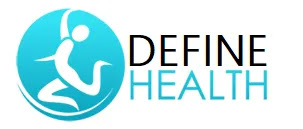High Cholesterol Symptoms
The ironic thing about high cholesterol symptoms is that there aren’t any. You don’t feel any better or worse and don’t show any obvious signs, until you have a heart attack.
With over 1,000 people daily dying from
heart disease in the US alone and more throughout the world the need to combat
heart disease is more important than ever. And high cholesterol is one of the
major risk factors associated with heart disease.
And while you cannot consider these to be
high cholesterol symptoms, there are warning signs that you should look out
for, including:
- Poor or high-fat diet
- Overweight
- Age (your cholesterol levels start to rise over
age 20)
- Smoking
- A sedentary lifestyle
- Family history of high cholesterol
There is only one way to see if you have
high cholesterol and that is through a blood test. When you have a physical
exam, you will fast before the exam to insure that the readings are accurate
and then your doctor will draw several small vials of blood.
The test results will come back measuring
your cholesterol in four key areas:
- Total cholesterol
- HDL cholesterol- this is your high-density
lipoprotein count. HDL’s are your good cholesterol, which cleans the walls
of your arteries preventing atherosclerosis (hardening of the arteries).
- LDL cholesterol-this is your low-density
lipoprotein count. LDL’s are your bad cholesterol. This causes the plaque
that sticks to the walls of your arteries causing atherosclerosis.
- Triglycerides-a type of fat that accounts for most
of the fats in your body.
The results of this blood test will be the
only high cholesterol symptom you will ever receive.
I have the results of the test listed
below:
Normal Cholesterol Level Chart
|
Cholesterol Range |
Classification |
Remarks |
|
Less Than 200 |
Good |
Low Risk of Coronary Artery Disease |
|
200-239 |
Borderline High |
Possible Risk of Coronary Artery Disease |
|
240 and above |
High |
Double the Risk of Coronary Artery Disease than those in the
normal range |
Normal HDL Cholesterol Chart
|
Cholesterol Range |
Classification |
Remarks |
|
60 or above |
Good |
Good protection against coronary artery disease |
|
Less than 50 (for women) |
High risk |
Possibility of developing coronary artery disease |
|
Less than 40 |
High Risk |
Possibility of developing coronary artery disease |
Normal LDL Cholesterol Chart
|
Cholesterol Range |
Classification |
Remarks |
|
Less than 100 |
Excellent |
Very low risk of coronary artery disease |
|
100-129 |
Good |
Low risk of coronary artery disease |
|
130-159 |
Borderline high |
Increasing risk of developing coronary artery disease |
|
160 and above |
High |
High risk of developing coronary artery disease |
Normal Triglyceride Levels
|
Triglyceride Range |
Classification |
|
Below 150 mg/dL |
Excellent |
|
150-199 mg/dL |
Borderline High |
|
200-499 mg/dL |
High |
|
Over 500 mg/dL |
Very High |
If your doctor analyzes your cholesterol
results and any of the following occur:
- Total cholesterol is too high
- HDL cholesterol too low
- LDL cholesterol too high
- Triglycerides are too high
Your doctor will recommend a combination of
lifestyle changes which could include:
- More exercise
- Low saturated fat diet
- Medications to reduce your cholesterol, known as
statins



